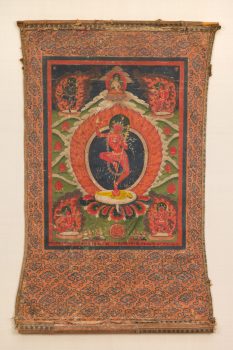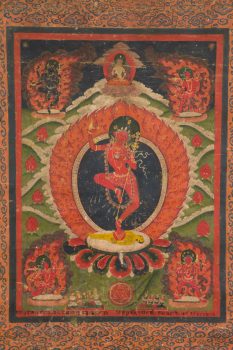Nepal
Dated by inscription, 1822


Nepal
Dated by inscription, 1822


A religious movement that originated in India around the fifth to seventh century with sacred writings and esoteric teachings and practices transmitted from teacher to student through initiation. These remain an important part of Hinduism and Buddhism today.
In Buddhism gender is considered more fluid compared to some other religions. Certain traditions emphasize the importance of all genders in achieving enlightenment. The feminine is considered an embodiment of wisdom and the masculine is an embodiment of method.
Female bodhisattvas and tantric deities embody specific enlightened qualities such as wisdom, power, and protection, and can be peaceful or wrathful in appearance.
The Himalayan kingdoms of the Kathmandu Valley were significant centers of Buddhist culture. Nepalese kings, Buddhist institutions, and ordinary people patronized the vibrant art guilds. The artistic traditions of the regions are well-known in Tibetan areas and beyond, and Newar artists have always been in high demand throughout Tibetan regions and Inner Asia.
Get the latest news and stories from the Rubin, plus occasional information on how to support our work.